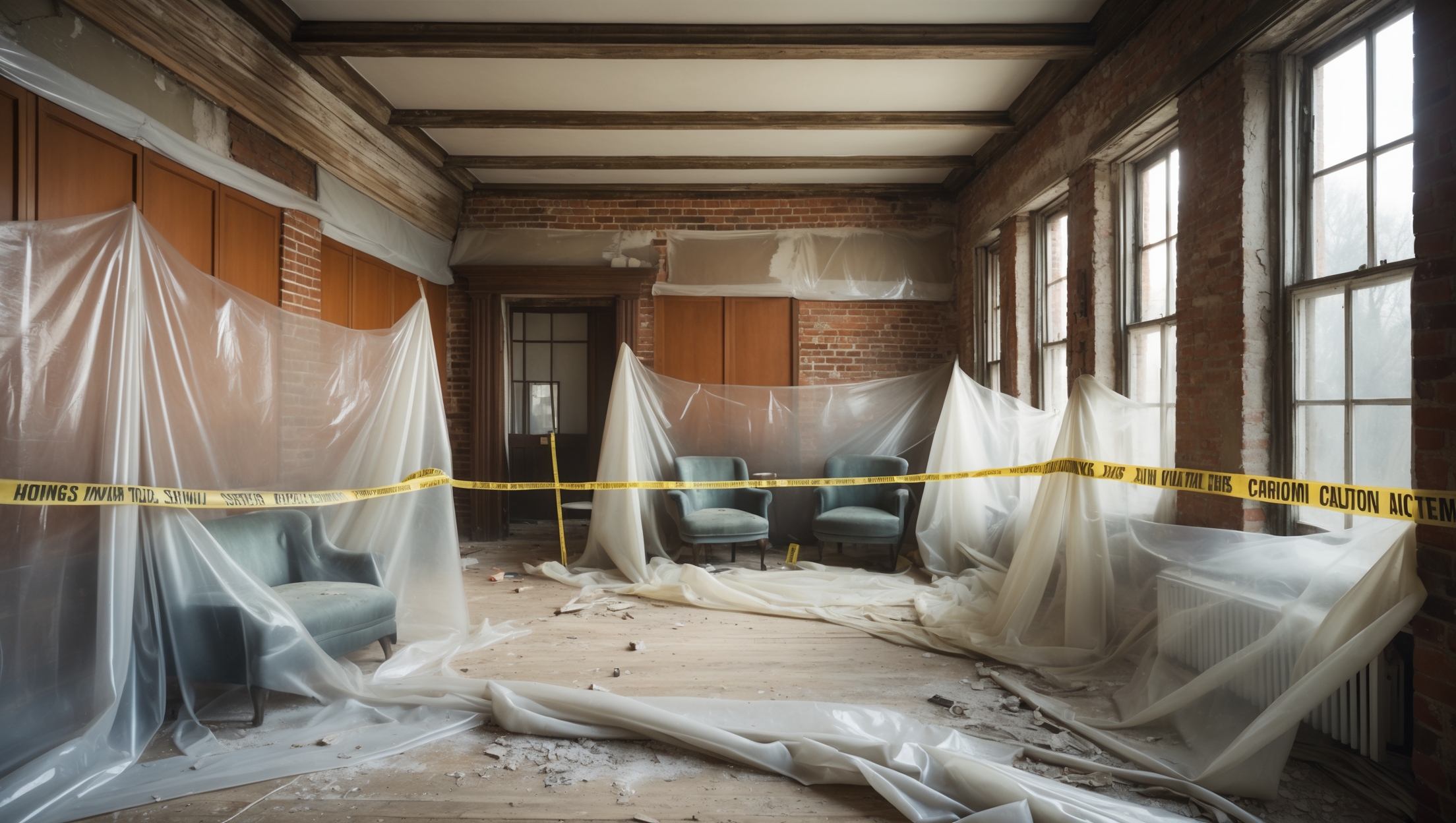Introduction: Why Asbestos and Lead Safety Matters in Home Improvement
The excitement of home improvement projects often centers around aesthetics, comfort, and increased property value. However, for homeowners tackling renovations—especially in homes built before the late 1980s—hidden hazards like asbestos and lead can pose significant risks to health and safety. These materials, once widely used for their durability and fire resistance, are now known to cause serious illnesses, including cancer and developmental disorders. Yet, many homeowners underestimate or misunderstand the dangers, sometimes exposing themselves and their families during seemingly simple upgrades like sanding, painting, or demolishing walls. Navigating these risks requires more than caution; it demands knowledge, preparation, and compliance with local and federal regulations. In this comprehensive guide, you’ll learn how to identify the presence of asbestos and lead in your home, assess when professional intervention is necessary, budget for safe removal or remediation, and ensure your renovation projects proceed without endangering your health or investment. Whether you’re planning a DIY refresh or a large-scale remodel, understanding how to handle asbestos and lead is essential for every responsible homeowner.
Understanding Asbestos and Lead: Where They Lurk in Your Home
What is Asbestos?
Asbestos is a group of naturally occurring silicate minerals that were commonly used in building materials for insulation, fireproofing, and sound absorption. These fibers are invisible to the naked eye and become a health hazard when disturbed, releasing microscopic particles into the air that can be inhaled.
- Common Asbestos-Containing Materials (ACMs):
- Vinyl floor tiles and adhesives (pre-1980s)
- Popcorn ceilings and textured paints
- Pipe, duct, and boiler insulation
- Cement siding and roofing shingles
- Old furnace gaskets and fireproof panels
What is Lead?
Lead is a heavy metal once used extensively in household paints, plumbing pipes, solder, and even some ceramic glazes. It is especially hazardous to children and pregnant women, causing neurological damage and developmental delays.
- Common Lead Sources in Homes:
- Paint in homes built before 1978
- Old water pipes and solder
- Window frames, doors, and trims with original paint
- Dust from renovations or deteriorating surfaces
Health Risks: What’s at Stake?
Asbestos Exposure Risks
Inhalation of asbestos fibers can cause asbestosis, lung cancer, and mesothelioma, often many years after exposure. There is no safe level of asbestos exposure, making prevention and control critical.
Lead Exposure Risks
Lead poisoning can occur through ingestion or inhalation of lead dust or chips. Early symptoms are subtle but can progress to severe cognitive and behavioral issues in children, and high blood pressure or kidney problems in adults.
Step 1: Identifying Asbestos and Lead in Your Home
Assessing Your Home’s Age and Renovation History
If your home was built before 1980, assume asbestos and lead might be present. Even newer homes can contain remnants if older materials were reused or renovations were incomplete. Gather renovation records, blueprints, and previous inspection reports if available.
Visual Clues and Suspect Materials
- Crumbly insulation or wrap on pipes (asbestos)
- 9×9” vinyl floor tiles with dark adhesive (asbestos)
- Thick, chalky, or alligator-cracked paint (lead)
- Popcorn or textured ceilings (asbestos, sometimes lead-based paint)
Professional Testing
Do not rely on visual inspection alone. Home test kits exist but may not be reliable, especially for asbestos. Instead, hire certified professionals to collect samples without disturbing hazardous materials. Laboratories analyze samples for conclusive results.
- Cost: $250–$800 per material tested, depending on number of samples and lab fees.
- Tip: Never sand, scrape, or cut suspect materials before testing results are confirmed.
Step 2: Planning Your Renovation—When to Call the Pros
DIY vs. Professional Remediation
Minor projects like painting over intact lead paint (encapsulation) or repairing undisturbed asbestos tiles may be safe for competent DIYers, but most disturbance—including demolition, sanding, or removal—should be handled by licensed professionals.
- Asbestos removal (abatement): Always hire certified abatement contractors. DIY removal is illegal in many jurisdictions and extremely hazardous.
- Lead-safe renovation: If disturbing lead paint, use EPA Lead-Safe Certified Renovators, required by law for homes built before 1978.
Planning for Containment and Safety
- Set up dust barriers and negative air pressure systems
- Seal vents, doors, and HVAC returns in affected areas
- Remove or cover furniture and personal items
- Plan for alternative living arrangements if remediation is extensive
Step 3: Cost Breakdown & Budgeting for Safe Remediation
Asbestos Removal Costs
- Inspection and testing: $250–$800
- Small-scale removal (1–2 rooms): $1,500–$3,000
- Whole-house abatement: $15,000–$30,000+
- Disposal fees (hazardous waste): $25–$50 per cubic yard
Lead Abatement Costs
- Testing: $250–$500
- Encapsulation (paint over): $4–$10 per square foot
- Removal/replacement (windows, doors): $200–$600 each
- Full-scale abatement (whole home): $8,000–$20,000+
Insurance and Grants
- Check if your homeowner’s insurance covers accidental contamination or release (most do not cover voluntary removal).
- Explore local, state, or federal grants for lead or asbestos remediation—especially for older homes or those with children or seniors.
Step 4: Compliance and Permits—What the Law Requires
Federal Regulations
- Asbestos: The EPA and OSHA regulate handling, removal, and disposal. Professional abatement is required for most projects.
- Lead: The EPA’s Renovation, Repair, and Painting (RRP) Rule mandates certification for contractors disturbing lead paint in homes built before 1978.
Local Permit Requirements
- Most municipalities require permits for remediation projects.
- Improper removal can result in fines, project delays, and required re-abatement at your expense.
Documentation
- Obtain and retain all reports, lab results, and abatement certificates. These documents may be required for future home sales or insurance claims.
Step 5: Preparing for Safe Renovation—Your Checklist
- Test all suspect materials before starting work
- Hire certified abatement or RRP contractors as needed
- Notify neighbors if large-scale abatement is planned (fiber and dust can travel)
- Seal off work zones and establish clean/dirty areas
- Use proper PPE: respirators (P100 for asbestos, N100 for lead), disposable coveralls, goggles, gloves
- Turn off HVAC systems to prevent dust spread
- Properly bag and label all waste for hazardous disposal
- Wet-wipe and HEPA-vacuum all surfaces after work
- Schedule final clearance testing before re-occupying the area
Step 6: Maintenance and Long-Term Management
Asbestos Management
- Leave non-friable asbestos (vinyl tiles, cement panels) in place if undamaged—monitor for deterioration
- Seal and label known ACMs for future reference
- Never drill, sand, or saw into suspect materials
Lead Paint Management
- Regularly inspect painted surfaces for chipping or peeling
- Keep floors and window sills clean and dust-free
- Use doormats and remove shoes to minimize lead dust tracking
Documentation for Future Projects
- Keep all lab reports, abatement records, and clearance certificates in a dedicated home file
- Disclose known hazards and remediation history if selling your home
Common Myths Debunked
- Myth: “If I don’t disturb it, it’s not a problem.”
Fact: True for intact materials, but even minor damage or vibration can release fibers or dust. - Myth: “A mask and plastic sheets are enough protection.”
Fact: Only certified respirators and professional containment methods offer real protection. - Myth: “Lead and asbestos are only a concern in really old, run-down homes.”
Fact: Many well-maintained homes built before the 1980s contain these hazards.
Case Study: Safely Renovating a 1960s Bungalow
Background
A family planned to remodel their 1964 bungalow, including new flooring and an open kitchen layout. Initial inspection revealed suspected asbestos in the floor tiles and lead-based paint on trim and window frames.
Action Steps
- Professional testing confirmed asbestos and lead presence.
- Certified abatement crew sealed off work areas, removed tiles, and safely disposed of all hazardous waste.
- Lead paint on trim was encapsulated with a special sealant, and windows were replaced with new, lead-free units.
- Project included clearance testing and official documentation for future resale.
Outcome
- No hazardous exposure during renovation
- Peace of mind for the family and future buyers
- Project cost: $9,800 for all testing, abatement, and documentation—avoiding potential health risks and legal liabilities
Conclusion: Protecting Your Home, Health, and Investment
Asbestos and lead are silent hazards lurking in millions of homes across the country, often hidden behind walls, beneath floors, or clinging to paint. While the presence of these materials doesn’t mean your home is unsafe, disturbing them during renovation can lead to severe health consequences and costly legal problems. The good news is that with the right information and preparation, you can safely navigate these risks and complete your home improvement dreams without compromise. Always start with professional testing, build necessary remediation and containment into your budget, and only trust certified contractors for removal or disturbance. Don’t cut corners on safety gear or skip critical cleanup steps. Remember, even small-scale projects like window replacement or wall repair can stir up hazardous dust if not handled correctly. Finally, keep thorough records of testing and remediation to protect your investment and provide peace of mind for future buyers. By taking asbestos and lead hazards seriously, you’re not just safeguarding your family’s health—you’re ensuring the long-term value and livability of your most important asset: your home.



